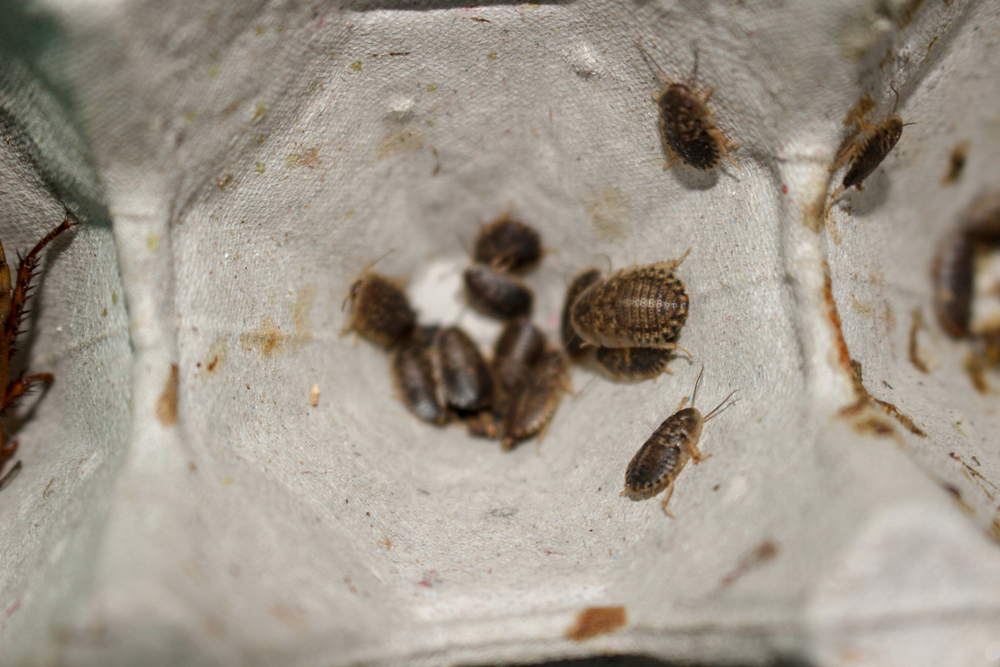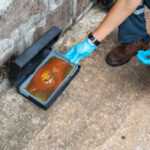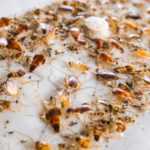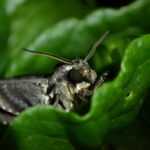Small Roaches: How to Spot and Get Rid of Them
Recognize small roaches and keep your home roach-free
Small Roaches: Effective Tips to Get Rid of Them Quickly
Struggling with small roaches in your home? These pests are more than just a nuisance; they can reproduce rapidly and hide easily, making them tough to control. In this article, you’ll learn how to identify small roaches, spot the signs of an infestation, and discover practical methods to eliminate them quickly.
- Identifying the specific species of small roaches, such as German, brown-banded, and Asian cockroaches, is essential for effective pest control.
- Early signs of roach infestations include spotting roaches during the day, droppings, and egg cases; immediate action is necessary to prevent escalation.
- Preventing small roach infestations involves sealing entry points, proper food storage, and maintaining low humidity, complemented by targeted treatments and regular monitoring.
Identifying Small Roaches
The first step in tackling a cockroach infestation is identifying small roaches. These tiny invaders, often baby cockroaches or nymphs, can be challenging to spot, given their size and ability to hide in tight spaces. Common species include German cockroaches, brown-banded cockroaches, and Asian cockroaches, each with unique traits.
Recognizing these differences aids effective pest control.
German Cockroaches
German cockroaches are among the most common indoor pests. They are about 1/2 inch long, with tan bodies and two dark stripes running down their backs. These german roaches primarily feed on a variety of organic materials, including food scraps, grease, and cardboard. Their egg cases, which can hold 16 to 50 eggs, are dark brown and resemble little beans. The german cockroach is particularly known for its rapid reproduction.
German cockroaches are notorious for their rapid reproduction, with a single egg case producing between 25 to 40 cockroach nymphs. They commonly hide in cracks and crevices, making them hard to spot. Additionally, they have developed resistance to many common insecticides, making control efforts more challenging.
Their presence can also pose health risks as they carry disease-causing bacteria like Salmonella and E. coli, and their shed skin and feces can trigger allergies.
Brown-banded Cockroaches
Brown-banded cockroaches range in size from 1/2 to 5/8 inches and have dark brown to black bodies with two lighter-colored bands across their wings. These roaches are most active at night and can often be found in warmer areas of a home, such as near appliances and electronics.
Asian Cockroaches
Asian cockroaches, measuring between 1/2 to 5/8 inches long, are typically found outdoors in yards, gardens, and wooded areas. Unlike German cockroaches, Asian cockroaches are drawn to indoor spaces and are capable of flying, especially when disturbed.
Their distinct behavior and habitat preferences pose a unique challenge compared to other roach species.
Signs of a Small Roach Infestation
Recognizing the signs of a small roach infestation early can prevent a minor roach problem from becoming a major problem. Key indicators include visible tiny roaches, droppings, baby roaches, and egg cases.
Noticing any of these signs calls for immediate action to mitigate the infestation.
Daytime Sightings
Roaches are typically nocturnal, so seeing them during the day often suggests a severe infestation due to overcrowding. Daytime sightings indicate that the population has grown to a level where they are forced to search for food and water outside their hiding spots.
Sticky traps help monitor and assess infestation levels.
Roach Droppings
Roach droppings are a telltale sign of an infestation. They can appear as small, dark specks, similar to ground coffee or black pepper. The presence of these droppings indicates that large numbers of cockroaches are moving through your home. Regular inspections for droppings and egg cases help identify roach activity early.
Roach feces may not be visible with a few roaches, but larger infestations make these signs more apparent. Checking areas like kitchens and bathrooms regularly helps detect and address infestations before they worsen.
Egg Cases
Cockroach egg cases, or oothecae, are segmented and can often be found hidden in various locations around the home. Discovering these cockroach eggs indicates a budding roach population and potential future infestations.
Brown-banded cockroaches attach their egg cases to surfaces, adding to the challenge of controlling their spread.
Preventing Small Roach Infestations
Proactive measures to eliminate food sources and seal potential entry points can prevent small roach infestations. Implementing thorough cleaning practices and maintaining low humidity can also deter small cockroaches.
A multi-faceted pest management plan greatly decreases the likelihood of future cockroach infestations.
Seal Entry Points
To prevent small roaches from entering your home, seal entry points effectively. Cracks around doors and windows can be effectively sealed with caulk. Filling gaps around pipes, windows, and baseboards reduces access points for roaches.
Sealing these gaps minimizes the chances of cockroaches entering your home.
Store Food Properly
Proper food storage helps prevent roach infestations. Airtight containers eliminate access to potential food sources for roaches. Glass or plastic containers with tight-fitting lids can keep food safe from small roaches.
Proper food storage reduces the chances of attracting roaches.
Ensure Proper Ventilation
Adequate airflow in your home lowers humidity, making conditions less favorable for roaches. Adequate ventilation decreases humidity, crucial for preventing cockroach breeding. Good airflow reduces moisture levels, creating an environment less favorable for roaches.
Proper ventilation maintains a healthy indoor environment.
Effective Methods to Eliminate Small Roaches
Getting rid of small roaches requires targeted strategies. Applying insecticidal baits and dust in high-risk areas effectively controls cockroach populations. Understanding the behavior of different cockroach species aids effective treatment and quick infestation management.
Using Roach Baits
Place roach baits in areas where roaches are most active to increase chances of consumption. Regularly rotating different cockroach baits helps prevent resistance and maintain effectiveness. Offering multiple bait options in infested areas increases the chances of cockroach consumption and improves control.
Roach baits often contain slow-acting poison, allowing the bait to be taken back to the nest and affecting more roaches. This method targets the entire colony, making it an effective solution for severe infestations.
Sticky Traps
Sticky traps monitor roach activity and reduce their population by physically capturing them. Placing sticky traps in various locations helps detect and assess cockroach populations over time. These traps provide a non-toxic way to monitor and manage infestations.
Using sticky traps alongside other methods, such as roach baits, enhances overall control efforts. Sticky traps offer a straightforward and safe option for households with children or pets, providing peace of mind while combating roach infestations.
Professional Pest Control
If DIY methods fail to resolve persistent roach infestations, contacting professional pest control services is advisable. Professionals use specialized tools and treatments that provide targeted and effective solutions, often surpassing DIY methods. They ensure thorough treatments considering the specifics of the infestation, significantly improving the chances of a roach-free environment.
Professional pest control is necessary when encountering various types of cockroaches or severe infestations. They offer comprehensive solutions and continued monitoring to prevent future infestations.
Preventing Future Infestations
Maintaining a clean environment and employing an integrated pest management approach prevents future infestations. Combining multiple control methods increases the chances of effectively eliminating small roaches.
These strategies ensure long-term success in keeping your home roach-free.
Regular Monitoring
Regular monitoring identifies early signs of roach activity. Daytime sightings of roaches can indicate a major infestation due to overcrowding. Consistent inspections and monitoring aid early detection and prevention.
Reducing Water Sources
Fixing leaky faucets and ensuring proper drainage eliminates moisture that attracts cockroaches. Addressing leaks and eliminating standing water significantly reduces the attractiveness of an area for cockroaches.
Reducing moisture is crucial in keeping cockroaches away.
Targeted Treatments
Targeted treatments focus on specific areas where roaches are frequently active, ensuring efficient elimination. Roach baits and sticky traps used in high-traffic areas effectively reduce roach populations.
For persistent infestations, professional pest control services offer comprehensive solutions and continued monitoring.
Understanding how to identify, detect, prevent, and eliminate small roaches is crucial for maintaining a roach-free home. Implementing preventive measures, such as sealing entry points, storing food properly, and ensuring proper ventilation, can significantly reduce the chances of infestations. Utilizing effective elimination methods, like roach baits, sticky traps, and professional pest control, ensures thorough treatment and long-term success.
Taking proactive steps and employing a combination of strategies is the best approach to managing and preventing roach infestations.
Frequently Asked Questions
How can I identify German cockroaches?
To identify German cockroaches, look for their small size, approximately 1/2 inch long, tan bodies, and the distinguishing two dark stripes on their backs. These features are key indicators of this pest.
What do roach droppings look like?
Roach droppings are small, dark specks that resemble ground coffee or black pepper. Identifying them can be crucial for addressing an infestation.
How can I prevent small roach infestations?
To prevent small roach infestations, seal entry points, store food properly, maintain low humidity, and practice thorough cleaning. Taking these steps can significantly reduce the risk of an infestation.
When should I contact professional pest control?
You should contact professional pest control when DIY methods no longer work and the infestation becomes too severe to handle on your own. Timely intervention can prevent further damage and ensure effective eradication.
What are some effective methods to eliminate small roaches?
To effectively eliminate small roaches, consider using roach baits, sticky traps, and seeking professional pest control services. These methods can help ensure a thorough eradication of the problem.



